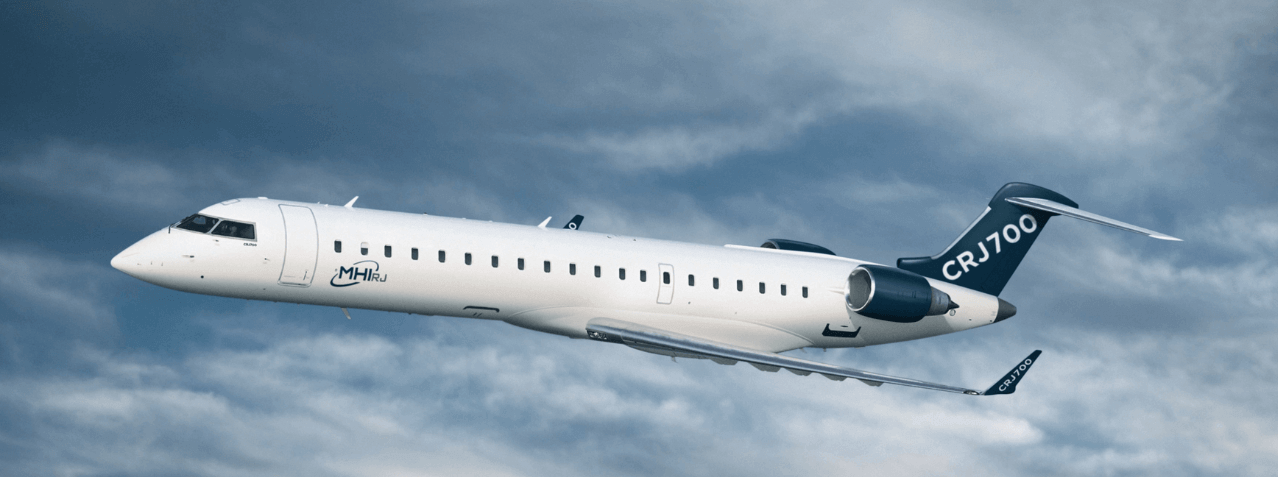ZeroAvia announced today that it has identified clear applications for zero-emission hydrogen-electric propulsion for regional aircraft.
Modernizing the CRJ700 with ZeroAvia's ZA 2000RJ powertrain...
ZeroAvia announced today that it has identified clear applications for zero-emission hydrogen-electric propulsion for regional jets. As part of the initial technical study carried out last year alongside MHIRJ, -Mitsubishi Heavy Industries Regional Jet, a subsidiary of MHI- type certificate holder, an initial entry point has been identified for retrofitting the CRJ 700 with ZeroAvia's ZA 2000RJ powertrain - confirming maximum take-off weight, center of gravity and structural tolerances. The study also validates the retrofit approach for other CRJ series aircraft in service, such as the CRJ 550 and 900.
...Up to 60 passengers with a range of 560 nautical miles (or 1,037 km)
The hydrogen-electric CRJ aircraft would be powered by two ZeroAvia regional jet engines (derived from the ZA2000 class of engines) to match existing performance. ZeroAvia's analysis suggests that it could accommodate up to 60 passengers with a range of 560 nautical miles (1,037 km), covering more than 80% of current flights. The study identified good opportunities for on-board hydrogen storage and powertrain integration to preserve the aircraft's aerodynamics. According to ZeroAvia, the system would significantly reduce operating costs through the use of hydrogen and lower maintenance costs, enabling new routes to be opened up and the number of flights on existing routes to be increased to match or increase passenger numbers.
A fan with increased dimensions
The technical assessment showed that the loss of turbine core thrust could be overcome within the limits of the original airframe by increasing the diameter of the fan, while further efficiency gains were possible by adopting new propulsion technologies such as geared electric fans or open-rotor designs. Assumptions based on the Phase 1 study included a HTPEM fuel cell system specific power of 2.4 kW/kg. ZeroAvia has already demonstrated a cell-level power of 2.5 kW/kg for its HTPEM fuel cells, and plans to deliver a system-level specific power of 3 kW/kg within two years. Such an achievement would improve the operating characteristics of the envisaged hydrogen-electric CRJ.
1400 aircraft potentially concerned
In market terms, more than 1,400 CRJ series aircraft could be converted to fly with the ZA2000 engine. "There is some compromise on payload and range, but this technical study confirms a viable propulsion architecture and integration that could prove quite revolutionary. Before the end of the decade, airlines could be flying emission-free jets," commented ZeroAvia CEO Val Miftakhov. "MHIRJ is proud to be working with ZeroAvia and to have completed the initial study to determine the viability of hydrogen propulsion on a regional jet. Confirming that hydrogen-electric propulsion can work for an aircraft like the CRJ is a great step forward towards the decarbonization of regional aviation," commented Hiro Yamamoto, CEO of MHIRJ.
Découvrez cet article sur Air&Cosmos

